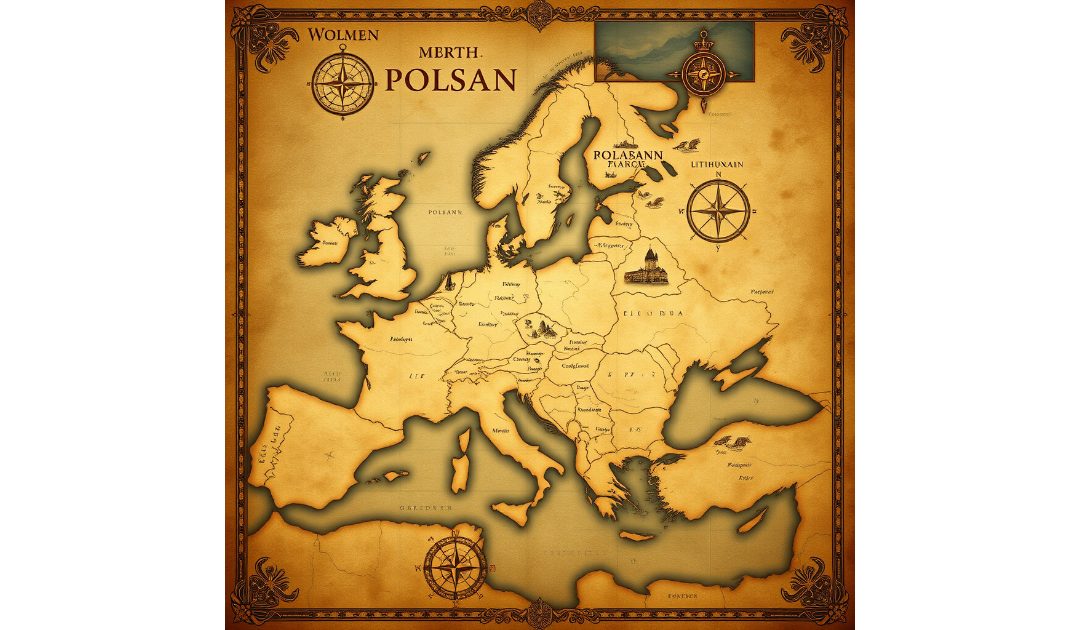My post yesterday was about the Solidarity movement in Poland, and the Cold War. The 28th of March, 1795, was an earlier significant day in the history of Poland. The Duchy of Courland and Semigallia, part of the Polish-Lithuanian Commonwealth, ceased to exist and became part of Imperial Russia.
The partition of Poland in 1795 marked a significant and sorrowful chapter in European history, representing the ultimate dissolution of the once-mighty Polish-Lithuanian Commonwealth. This event was the third and final partition, orchestrated by three neighbouring powers: the Russian Empire, the Kingdom of Prussia, and the Habsburg Monarchy of Austria. Together, they erased Poland from the map, a state of affairs that would last for over a century.
The history leading up to the partitions of Poland is complex, involving a tangled web of political, social, and economic issues that plagued the Commonwealth. By the late 18th century, Poland was a shadow of its former self. The once-strong Commonwealth was weakened by internal strife, nobility’s excessive privileges, and an ineffective political system, notably the liberum veto, which allowed any member of the Sejm (the Polish parliament) to dissolve sessions and nullify legislation.
As Poland struggled with internal reforms and external pressures, its more powerful neighbours saw an opportunity. The first partition in 1772 saw Poland losing about 30% of its territory to Russia, Prussia, and Austria. The second partition in 1793 further diminished Polish land, leaving the nation vulnerable and much weakened.
The third partition in 1795 was a culmination of efforts by Catherine the Great of Russia, Frederick William II of Prussia, and Francis II of Austria to quash any resurgence of Polish sovereignty. Unable to resist the superior military and political clout of these powers, Poland was divided among the three states, effectively erasing it as an independent entity.
Russia took a significant portion of eastern Poland, including much of Lithuania and Volhynia. Prussia gained control of Warsaw and the surrounding areas, consolidating its control over the economically valuable and strategically significant western regions. Austria acquired territories in southern Poland, including the culturally rich city of Kraków.
This partition was executed with ruthless efficiency, with each power keen to solidify their gains and suppress any potential Polish nationalism. The dismantling of the Polish state was accompanied by efforts to integrate these regions into their new ruling states, involving policies of cultural assimilation.
The partitions had a profound effect on the Polish people, sparking waves of emigration, uprisings, and a persistent drive for independence. The loss of sovereignty led to a great sense of national tragedy. Nonetheless, the Polish identity endured, with clandestine schools, literature, and art becoming vessels for national expression and resistance.
The Polish elite, many of whom were dispersed across Europe, played significant roles in the cultural and political life of their adopted countries. Figures like Tadeusz Kościuszko and Adam Mickiewicz became symbols of the Polish struggle for freedom, their works and military achievements inspiring future generations.
Poland’s disappearance from the map of Europe lasted until after World War I, when the Treaty of Versailles in 1919 re-established Polish independence. The spirit of the Polish people and the drive for self-determination, however, never waned during the 123 years of partition. The collective memory of lost sovereignty and the resilience shown during this period have profoundly shaped Polish national identity and pride.
The partitions also had broader European implications, setting precedents for future territorial divisions and altering the power dynamics within Europe. The Polish question continued to influence European politics throughout the 19th and 20th centuries, contributing to the shaping of modern Europe.

